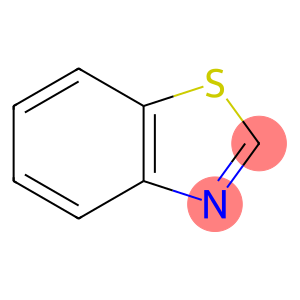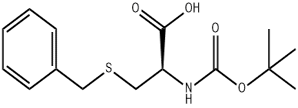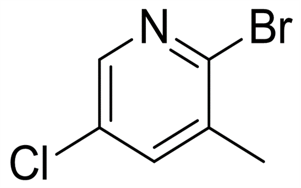Benzo thiazole(CAS#95-16-9)
| Risk Codes | R22 – Harmful if swallowed R20/21/22 – Harmful by inhalation, in contact with skin and if swallowed. R36 – Irritating to the eyes R25 – Toxic if swallowed R24 – Toxic in contact with skin R20 – Harmful by inhalation |
| Safety Description | S23 – Do not breathe vapour. S26 – In case of contact with eyes, rinse immediately with plenty of water and seek medical advice. S36 – Wear suitable protective clothing. S36/37 – Wear suitable protective clothing and gloves. S45 – In case of accident or if you feel unwell, seek medical advice immediately (show the label whenever possible.) |
| UN IDs | 2810 |
| WGK Germany | 2 |
| RTECS | DL0875000 |
| TSCA | Yes |
| HS Code | 29342080 |
| Hazard Class | 6.1 |
| Packing Group | III |
| Toxicity | LD50 i.v. in mice: 95±3 mg/kg (Domino) |
Introduction
Benzothiazole is an organic compound. It has the structure of benzene ring and thiazole ring.
Properties of benzothiazole:
- Appearance: Benzothiazole is a white to yellowish crystalline solid.
- Soluble: It is soluble in common organic solvents such as ethanol, dimethylformamide and methanol.
- Stability: Benzothiazole may decompose at high temperatures, and it is relatively stable to oxidizing and reducing agents.
Benzothiazole uses:
- Pesticides: It can also be used in the synthesis of certain pesticides, which have insecticidal and bactericidal effects.
- Additives: Benzothiazole can be used as an antioxidant and preservative in rubber processing.
Preparation method of benzothiazole:
There are several methods for the synthesis of benzothiazole, and common preparation methods include:
- Thiazodone method: Benzothiazole can be prepared by the reaction of benzothiazolone with hydroaminophen.
- Ammonolysis: Benzothiazole can be produced by the reaction of benzothiazolone with ammonia.
Safety information for benzothiazole:
- Toxicity: The potential harm of benzothiazole to humans is still being studied, but it is generally considered to be somewhat toxic and should be avoided if inhaled or exposed.
- Combustion: Benzothiazole is flammable under flames and needs to be kept away from open flames and high temperatures.
- Environmental impact: Benzothiazole degrades slowly in the environment and may have toxic effects on aquatic organisms, so pollution to the environment should be avoided when used and handled.








